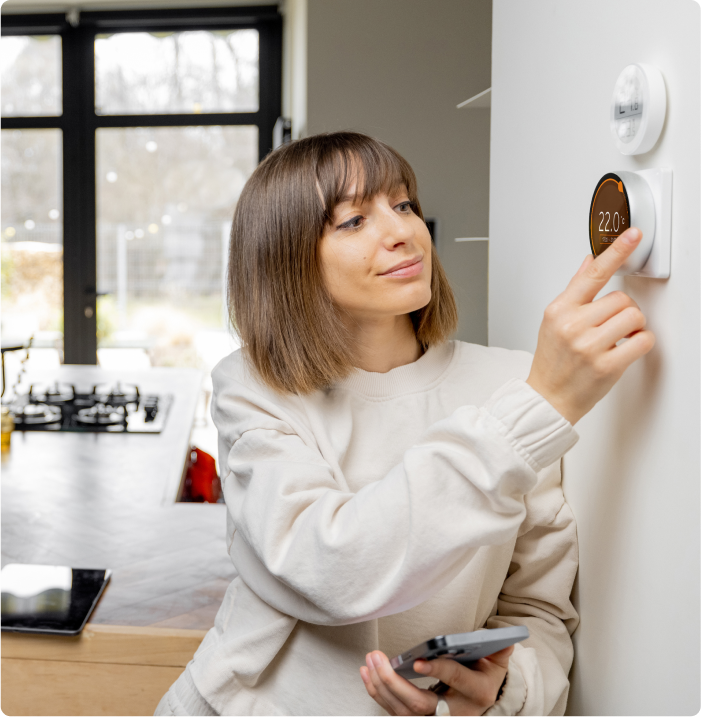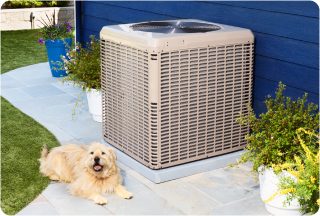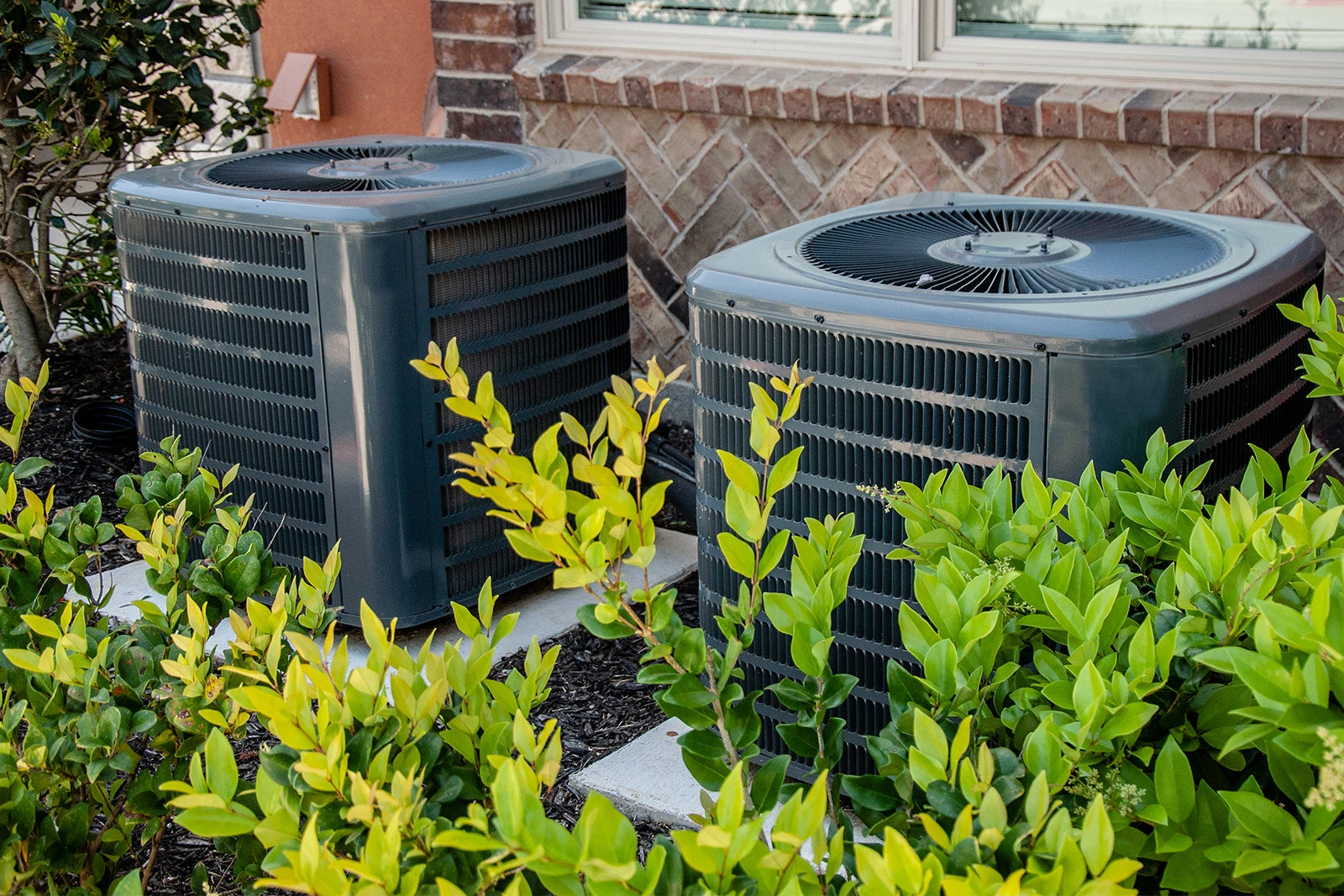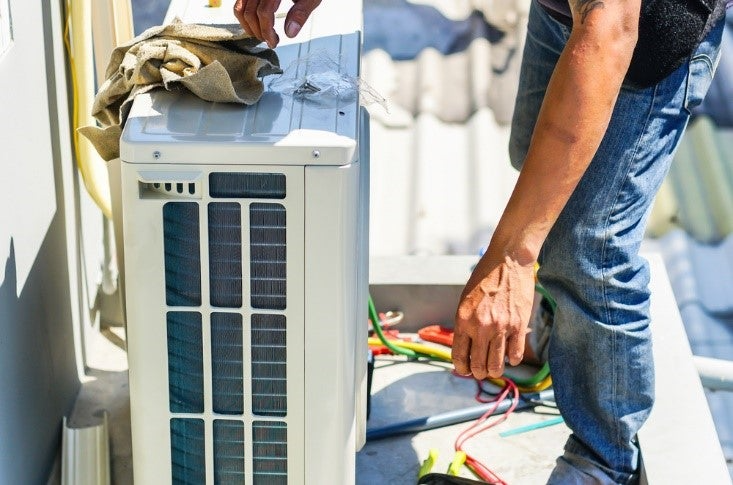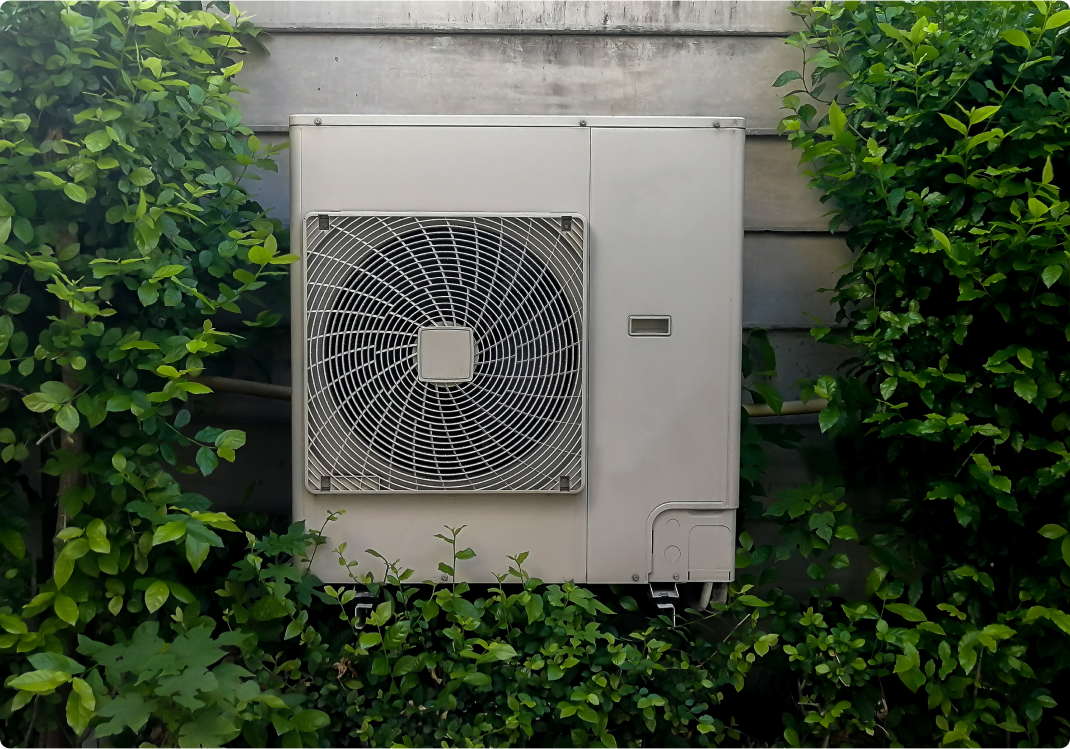1. Heating system won't start up
If your heating system won’t start up at all, you may be looking at a serious fix or part replacement. But before calling a Pro, consider these several common issues and fixes to see if you can solve your heat problems:
Thermostat issue
Make sure the thermostat is set to "heat" and that the temperature is set higher than the current room temperature. Sometimes, the thermostat batteries may need to be replaced.
Power supply problems
Check the circuit breakers or fuse box to ensure power is reaching your heating system. The circuit for your furnace could have tripped. Resetting the breaker might solve the issue.
Blown fuses or tripped switches:
Some furnaces have a switch that looks like a light switch, often located near the furnace unit. If this is turned off or tripped, it will prevent the system from turning on.
Ignition or pilot light issues
If you have a gas furnace, the pilot light may have gone out, or the electronic ignition might not be working properly. Relight the pilot if it’s out, but if you’re unsure how to solve gas heater problems safely, consult a professional.
Dirty filters
A clogged furnace filter can lead to reduced airflow, which may prevent the furnace from starting. Make sure filters are clean and replace them regularly to maintain system efficiency.
Blocked flue or vent pipe
If the furnace detects an obstruction in the vent pipe, it will shut down as a safety measure. Inspect the flue or vent for any blockages.
Gas supply problems
Make sure the gas valve supplying fuel to the furnace is open. Sometimes, maintenance or utility work can cause the valve to be turned off.
If you've tried these steps and your central heating system is still not working, it might be time to call a professional technician. Complex issues like faulty control boards, broken blowers, or failing sensors are best handled by experts.
2. Low air flow from vents
Low airflow from your heating vents can feel frustratingly inefficient when the temperatures really start to sink. Here are some common causes and troubleshooting steps you can take:
Clogged air filters
One of the most common reasons for reduced airflow is a dirty or clogged air filter. When the filter becomes too full of dust and debris, it restricts the airflow through your HVAC system, leading to weak airflow from vents. Regularly check and replace your filters to keep air moving freely.
Blocked or closed vents
Check that all the vents in your home are open and free from obstructions. Furniture, curtains, or other items can sometimes block vents, reducing the overall flow of warm air into the room. Additionally, partially or fully closed vents can cause pressure imbalances and put extra strain on your heating system.
Ductwork issues
Problems with your ductwork, such as leaks, disconnections, or bends, can significantly impact airflow. Leaks can cause warm air to escape before it reaches the vents, and even small leaks can have a major effect.
Blower fan issues
The blower fan in your heating system is responsible for pushing air through the ductwork and into your home. If the blower motor is malfunctioning or running at a low speed, it can result in weak airflow. This issue requires professional diagnosis and repair to avoid causing further damage to the heating system.
Dirty coils
If your system uses both heating and cooling, dirty evaporator or heat exchanger coils can cause airflow problems. Dust and grime can accumulate on these components, which reduces their efficiency and restricts airflow.
Ductwork design or size issues
In some cases, the duct system might not be properly designed for your home or may be too small to accommodate the volume of air being pushed through.
If you have tried these troubleshooting steps and are still experiencing heat problems, it’s best to contact a professional. They can provide a comprehensive assessment of your system to diagnose any deeper issues.
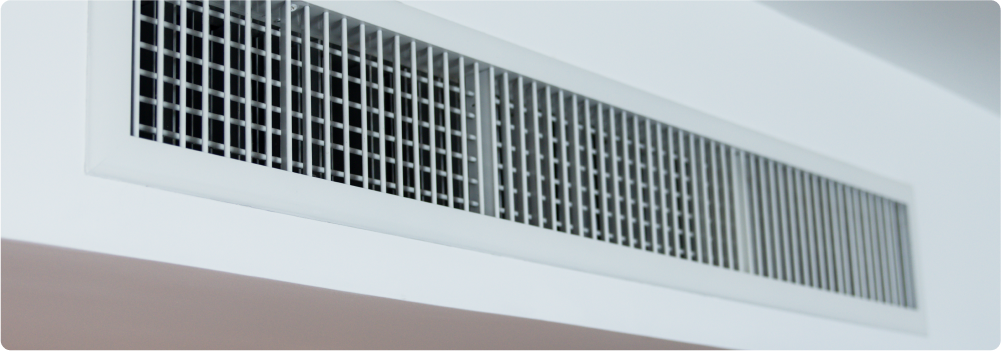
3. Cool air blowing instead of heat
A furnace blowing cold air is like a book with all the pages missing — useless! These are the common heater problem behind it and what to do:
Thermostat issues
One of the most frequent reasons for cold air is incorrect thermostat settings. Make sure the thermostat is set to "heat" and that the temperature is higher than the current room temperature. Make sure the batteries aren’t dead.
Pilot light or ignition problems
If you have an older furnace, a pilot light that's gone out might be the culprit. Check the pilot light and relight it if needed. For newer models, it could be an ignition system issue, which is usually better handled by a professional HVAC technician.
Tripped limit switch
Furnaces have a safety feature called a limit switch that turns off the burner if the furnace becomes too hot. This switch may trip if the airflow is restricted, often due to dirty filters or blocked vents. Once the switch is tripped, the blower may continue to run, blowing cool air instead of warm. Resetting the limit switch and addressing any airflow issues can help resolve this problem.
Condensate line blockages
High-efficiency furnaces often produce condensation. If the condensate line becomes clogged, a sensor can shut down the furnace to prevent overflow, which might leave the blower running without generating heat. Inspect the line for blockages or clogs and clear it if needed.
If your furnace still blows cold air after going through these steps, it's time to call in a professional. Some issues, like a malfunctioning control board or gas valve, are best left to experts to ensure safety and efficiency.
4. Weird noises coming from the heating system
When a heating system makes unusual noises, it can be a sign that something needs attention. The following are some common sounds you might hear and what heating problems they could indicate:
Banging or popping
These noises are often caused by air ducts expanding and contracting as they heat up or cool down. If the sound is coming directly from the furnace, it could indicate that there's a buildup of gas due to delayed ignition, which requires immediate attention from a professional technician to ensure safety.
Rattling
Rattling noises could be due to loose panels or parts inside the furnace. Over time, screws or bolts may loosen, causing the metal components to vibrate. Inspect the access panels and tighten any loose screws. If the noise continues, it might be a sign of a failing motor or blower, which will need professional repair.
Squealing or screeching
High-pitched squealing noises typically indicate a problem with the blower belt or motor bearings. The belt may have worn out or slipped out of place. Lubricating the motor bearings can sometimes help, but in many cases, replacing the belt is necessary.
Humming
A low humming noise is usually normal when your system is running. However, if it becomes louder, it could mean there's an electrical issue or a problem with the blower motor. Electrical issues should always be handled by a licensed professional to avoid safety risks.
Whistling
If you hear a whistling noise, it’s often due to restricted airflow. This could be caused by dirty filters, closed vents, or blocked return air registers. Make sure filters are clean and vents are open and unobstructed to allow for proper airflow.
If you hear any of these noises, it's important not to ignore them. While some heating problems can be resolved by tightening a few screws or changing a filter, especially when it comes to wall heater problems, others may require professional help to prevent further damage.
5. Strange smells when the heater is running
Strange smells coming from your heating system can really kill the cozy mood. Understanding what they mean is essential, as certain odors can indicate underlying heater issues that need prompt attention.
Burning dust smell
A common smell when you first turn on the heat is a burning dust odor. Dust tends to settle on the heating elements or in the ductwork during the warmer months when the system is not in use. When you turn the furnace on for the first time in the season, the dust burns off, creating a distinct, temporary burning smell. This should dissipate after a few hours. If it doesn’t, consider changing your air filter, as accumulated dust may be contributing to the problem.
Electrical or metallic smell
A hot, metallic, or electrical burning smell could indicate overheating components or even a potential electrical problem, such as faulty wiring or a failing motor. This type of smell is a serious issue that requires immediate professional inspection, as it could pose a fire hazard.
Rotten egg or sulfur smell
If you smell rotten eggs, it may indicate a natural gas leak. Natural gas itself is odorless, but gas companies add a sulfur-like odor to help detect leaks. If you notice this smell, turn off the heating system immediately, leave the house, and contact your gas company or HVAC technician. Gas leaks are extremely dangerous and need to be addressed right away.
Mold or musty smell
A musty smell might suggest mold growth either in the ductwork or around the unit itself, often caused by excess moisture. Mold can lead to health issues, especially for people with respiratory conditions or allergies. Cleaning or replacing the air filter and scheduling a duct cleaning can help eliminate this problem and improve the air quality in your home.
Chemical smell
If you smell a formaldehyde-like chemical odor, it could be due to a cracked heat exchanger, which can allow harmful gasses, including carbon monoxide, to leak into your home. This is a serious safety concern, and you should turn off the system immediately and call an HVAC professional for an inspection.
Getting to the bottom of odd odors right away can help keep your heating system running correctly, as well as safeguarding the health and wellbeing of everyone in your home.
